Leaderboard
Popular Content
Showing content with the highest reputation on 30/12/20 in Posts
-
Hello all; Here's my take on Lou IV. I've detailed a lot of the thought and decision-making process in the WIP thread, which can be found here; In short though, I based my decision on using blue paint on three main arguments; Dana Bell's - @Dana Bell - review of the remaining original transparency showing what he reports as blue on Lou IV. I assume Dana can tell the difference between blue and green 🙂 Michael Bowyer's contemporary notes of his observations that some 361st Mustangs had blue paint on them - this establishes that blue was used; assuming Michael could tell the difference between blue and green 🙂 Why not? Clearly using bright colours wasn't an issue, the nose was bright yellow! I came to the belief that something I called the "go-faster stripe" effect came into play and that these young men painted their airplanes in a way that made them look cool. Certainly the USAAF encouraged the moral boosting effect of nose art and other decoration, so why not blue? Anyway on the the pics; And some pics to illustrate the tonal quality compared to the black and white images; And lastly, just for fun... If you have the patience for it, there's even more detail available below. Comments welcome, critique welcome too. Cheers; Mark.29 points
-
Hi All, I've managed to squeeze in one final build in this most unusual of years! This is my effort at Special Hobby's 1:48 CAC CA-13 Boomerang. I knew nothing of this aircraft, so it was a good education process as part of the build. The evolution of the aircraft is interesting, as it was the first fighter aircraft designed and manufactured by the Commonwealth Aircraft Corporation in Fisherman's Bend, VIC. The design of the aircraft was derivative of the Wirraway trainer aircraft, itself a locally-manufactured variant of the NA-16 Harvard. The design used the R-1830 Twin Wasp, which was manufactured locally to power Australian-made Beauforts. The first prototype flew within 3 months of receiving an order to proceed, a real testament to Aussie ingenuity and agility. The type was produced from 1942-5, and although underpowered and slower than contemporaries acquitted itself well in the ground attack and close support roles, and was well liked by its pilots. I have modelled as A46-199 'Home James' of 4 Sqn RAAF, based in New Guinea in 1944, flown by Fl Lt Jack Archer. Here's a couple of shots of the aircraft: There are a few unusual elements to this scheme which I've tried to incorporate: - The patch under the starboard side of the cockpit, which from research on other forums (particularly Aussie Modeller) I have decided to complete as a bare plywood finish - The significant exhaust scorching of the paint - A single section of the empennage finished in foliage gree, as opposed to white as per the rest of the area The model was finished in Life Color's RAAF paint colours of Earth Brown and Foliage Green over Sky Blue, and I used a set of Montex masks for the canopy and national insignia. Here is the WIP if anyone is interested: This was typical SH fare with good detail, but vague fit and engineering. The kit has fought me all the way and nearly ended up on the bin several times. However I'm glad I persisted and I'm not displeased with the final outcome. Anyway, on to the photos ( @Troy Smith take note - I have finally upgraded my studio setting at your suggestion - thank you sir!): And a final shot with her RAAF stablemates: I'll also add this final build to my 2020 yearbook, which you can find here if you are interested: I'd like to wish everybody on this great site a Happy New Year - thanks in particular to @corsaircorp, @bigbadbadge and @Corsairfoxfourunclefor their support throughout this build. Thanks for looking, Roger22 points
-
Hi The final build of the year. Start at the same time of the Pembroke and finish this day A beautifull kit with no trap More photos at this address Supermarine Spitfire MkIa21 points
-
Hi, This is 1/32 Spitfire Mk.1a with the markings of “FZ-L K9906” No 65 Squadron, RAF Hornchurch, April 1939. Modifications are as follows: Barracudacast cockpit improvement set. Yahu instrument panel Quickboost seat Quickboost exhaust set Quickboost Spinner and propeller set Barracudacast wheels Barracudacast cockpit door Master Details horizontal tails Scale Aircraft conversion landing legs EagleParts corrected oil cooler Archer Fine Transfer resin fasteners Unarmored windscreen from Aerocraft Models Stracthbuilt early type pitot tube Paints : Gunze Sangyo acrylics and Alclad metalizers ps: Special thanks to Alistair McLean from Aerocraft Models for critical help on the production of customised unarmored early style windscreen.19 points
-
The 1/72 Arma P-51B/C is truly our reward for surviving this awful year.19 points
-
Panther Mk.V - No. 445 - Pz.Abt. 51 'Operation Citadel' - Kursk - August 1943 This was my build for the Panther Mk.V STGB and will be my final completion for 2020. I have completed the actual build of a Pz.III in the MTO GB but I need to finish the base and figure(s) for it – which will probably take it into a week or so of January. I was planning on making a 1/35 kit for the Panther Mk.V STGB, but time was not on my side, so I decided to make a this 1/72nd snap kit from Zvezda instead. I have to say I really enjoyed the build. It was a relatively straight forward kit to make and I added a few extra bits and pieces - engine deck grills from some random PE mesh from the spares box, a stretched sprue aerial, fuse wire for the hatch handles and lead wire for the smoke launcher cables. My Panther is based on an actual Panther that took part in the fighting around Kursk and which was eventually knocked out by a mine and abandoned. As I was doing such a small kit (and many of the modellers taking part in the GB were doing incredible modelling - seriously impressive stuff – please go and check the GB out!) - I decided I had better add a simple base to mine. The WIP thread can be found HERE Kit: Zvezda 1/72 Snap Kit Paints: Humbrol, Revell and Railmatch acrylic paints all applied by brush Extras: Spares box PE grill, fuse wire, lead wire, stretched sprue, small Wilco’s picture frame, corrugated card for the base, Gaugemaster Grass Mat and various Army Painter tufts. The first set of photos were taken against the sky backdrop photo on my Spitfire Display base. There are a lot of photos but I blame the interesting changes in light quality! (I will thin them a bit when I get chance): These next photos show the Panther on its picture frame base: Finally, some of the Panther on its own against a white background: And just to show how small it actually is: If you are still here – thank you for looking. I thoroughly enjoyed this build. Thank you to Dennis @Corsairfoxfouruncle for hosting the GB and to everyone who took the time to comment and offer advice in my build thread. Don’t forget the Panzer III STGB starts on the 6th February – hopefully I will see you all there! Comments and suggestions welcome. Kind regards, Stix17 points
-
The last one of the bench for me in 2020 is the Tamiya 1/48 F-14D Tomcat in the Grim Reapers CAG Bird markings. The kit was exceptional, probably the nicest I have built. The detail is excellent and the pieces slipped together with zero issues. that made for an enjoyable build. I used the Tamiya decals which were not too bad at all. The model is painted in Hataka orangeline. Thank you for looking and please leave any questions or comments that you may have.17 points
-
Latest off the bench is the Tasman Models 1/72 DH.89A Dragon Rapide/Dominie in RAAF livery of a dark earth / foliage green / sky blue camouflage scheme. This kit is a rebox of the 1979 Heller kit, and was built as part of the Heller GB. I would have liked to have done more weathering / painting to really highlight the ribbed wings and fuselage, however a few dramas with the build put a stop to those ideas. To be honest, it ended up a bit of a grind to get this one over the line. Hopefully you find the end result somewhat presentable. Rigged with 0.047 mm rubber thread, and the antenna wire with 0.15 mm EZ-Line. This was my second biplane in a row, both of which included rigging. Time to build some nice, simple monoplanes for a break. Thanks for looking. Build Log: https://www.britmodeller.com/forums/index.php?/topic/235083122-raaf-dh89a-dragon-rapide-dominie-tasman-reboxing-finished/17 points
-
I bought this on ebay earlier this year as 'part built' - it had been started but I guess the builder was expecting a 'shake and bake' and had given up. It wasn't too bad to complete, but although it was the second release with the injected canopy it was evidently an early CA mould and a way from the Gosling and Hornet, the other CA models I've completed. It still went together OK with the usual test fitting and some filler, although the fit was generally quite good. It's mostly from the box with just a stretched sprue antenna and the aerial mast moved to the canopy to suit this early production example. I'm still puzzled how this worked - presumably when the canopy was opened, the antenna went slack. I haven't found any photos of the early arrangement with the canopy open and on most photos the antenna is barely visible anyway. The decals looked nice on the sheet but some of them broke up easily, not least the fin flashes. I managed to piece together the bits and then touch them up with paint. One of the upper wing roundels totally disintegrated so they are from the spares box. There is a little silvering even after a good coat or three of Kleer. It's brush painted with Humbrol enamel. Whirlwinds are some of the few aircraft regularly parked with their flaps down, presumably because the flaps and radiators were linked and the Peregrine engines suffered from overheating. Even with the flaps up, the cooling vents in the upper wing surface didn't completely close so there's plenty of scope for scratch builders to work on this area. That's a bit beyond my skill! There's a photo of P6969 in the Warbird monograph looking very tatty and captioned that it was towards the end of 263 Squadron's use of the type, which was January 1944. In fact it was lost on 8 February 1941 in a combat with an Ar 196.15 points
-
Hi The very last two models which I did in 2020 are two Dewoitnes D 520. One is a OOB (except decals) from a Hasegawa kit, the second one has a complex history and is very important as a foundation myth (or foundation stone) of my modelling in some way - this is a Frog kit glued (but not painted) by my Father when he returned from a scholarship on Manchester University in 1961. In his youth (1950s) he was constructing some airplane or train engines large scale models out of the scratch and also paper airplane models. As a young astronomer preparing his PhD from a country behind iron curtain he got the scholarship for 3 months at the University of Manchester to verify his calculations using computer. Those days there was no computer at all in Poland. When he was on site he found out, that the scholarship is in fact founded by NATO, so was terrified to keep it in the deepest secret, to avoid being accused for espionage after return... He told this to us few years ago only. The reason of getting this scholarship was that his PhD was about the mass distribution on Moon (so called mascons, https://en.wikipedia.org/wiki/Mass_concentration_(astronomy) ) which results in a kind of oscillations of Moon, and those movements allows to do some mathematical calculations to get their distribution. Those objects could be dangerous for low-level orbiting over Moon, therefore the knowledge on them was so important at this time. An the observations of those oscillations were done 50 years earlier, in beginning of XX century by professor T.Banachiewicz, Polish astronomer (https://en.wikipedia.org/wiki/Tadeusz_Banachiewicz), when he worked in Kazan, Russia, before revolution. And this was the best (longest and most precise) set of data before the satellites era. Father got this set of data from Banachiewicz to work on this for his PhD, so to do those calculations. When Father was in UK he discovered model shops and whole world of modelling, not present in communist Polns these years, so he bought some of them like Airfix Caravelle, Comet and Vanguard in 1/144, Queen Elisabeth in 1/600 and in 1/72 F4U1D Corsair by Revell and Dewoitine 520 from Frog. In subsequent five years he did them for his children, so for me and my older Brother ( @KRK4m ). Two in 1/72 models were unpainted, since he bought only basic colors like white, black, red, brown - which enabled finishing the others. Here is a bit nostalgic photo from that era (~1963-4) of us posing with Caravelle and Comet (that is me): Then, within few years some models appeared in Poland, Father was introducing us to this hobby and within few years we started to do models by ourselves. I painted Dewoitine (ugh...- without thinner with glossy paints) and Brother did the same to Corsair, then after some time I repainted it already with mat colors and then (still some 45 year ago) third time. So it had a really thick cover of paints. Many times the prop and the legs were broken, since we were playing some children games with them before. All the time they were glued back so surprisingly the model survived 55 year with only Pitot tube lost. Some time ago I immersed it in NaOH solution for couple of weeks a removed all paint. The canopy looks terrible it was even a bit opaque due to glue, but I polished it and cover with gloss varnish. I have made some small fixes (like filling holes in cooler and main wheel bay), I shorted the u/c legs to match that of Hasegawa kit and painted. I used the decals from the ancient Esci set (for individual machine, the roundels are by Techmod), it presents machine No 105 from 2 Ecadrille of GC I/3 during 1940 defense of France: In parallel I completed the Hasegawa kit, also using mix of decals - main part come from box, but the Squadron emblem comes from the same Esci set. This is machine No 49 from Vichy AF, 2 Escadrille of GC II/6 based in Thies , Senegal in August 1941 An both together Comments welcome. Welcome also to my yearbook, the year score is 24 new plus two restored. Have a happy whole New, the 2021 year, back in normal free of epidemic fears and fully in health! Regards Jerzy-Wojtek13 points
-
Honestly I now feel like these guys are doing the 1/72 revolution claimed before by Eduard.13 points
-
#28/2020 and the last one for this year Eduard kit, upper wing and fuselage Balkenkreuz decals taken from a Fw190 kit because Erla G-10 had smaller ones, besides that the ones on the upper wings were in a slightly more outward position. Brake lines done with plastic rods and lead wire, EZ Line for the antenna wire. My dad didn´t adress the other kit issues. Eduard goes for RLM 75/82 camo but usually Erla G-10 had the standard 74/75 until the end. AK Real Color paints used for 74/75/76. JaPo, Kagero und Ullmann´s book used as reference. Build thread here https://www.britmodeller.com/forums/index.php?/topic/235083173-black-tulip148-messerschmitt-bf109g-10-erla-ijg52/ Aircraft of Hauptmann Erich Hartmann, CO of I./JG52, in Görlitz/Germany in April 1945. DSC_0001 by grimreaper110, auf Flickr DSC_0002 by grimreaper110, auf Flickr DSC_0003 by grimreaper110, auf Flickr DSC_0004 by grimreaper110, auf Flickr DSC_0005 by grimreaper110, auf Flickr DSC_0006 by grimreaper110, auf Flickr DSC_0007 by grimreaper110, auf Flickr DSC_0008 by grimreaper110, auf Flickr DSC_0009 by grimreaper110, auf Flickr DSC_0010 by grimreaper110, auf Flickr DSC_0011 by grimreaper110, auf Flickr DSC_0012 by grimreaper110, auf Flickr DSC_0013 by grimreaper110, auf Flickr DSC_0014 by grimreaper110, auf Flickr DSC_0015 by grimreaper110, auf Flickr DSC_0016 by grimreaper110, auf Flickr DSC_0017 by grimreaper110, auf Flickr DSC_0018 by grimreaper110, auf Flickr DSC_0019 by grimreaper110, auf Flickr DSC_0020 by grimreaper110, auf Flickr12 points
-
Hi all and my last build for this year...and my first ever in 1/48. Built as one of my entries in the 'Interceptors' GB here on the site. The build thread is here but to recap: Kit: Eduard 1/48 Spitfire Mk1 'Spitfire Story - the Few' Build: Out of Box (P/E included with kit) Decals: From kit - 222 Squadron, Douglas Bader; Duxford, May 1940 Paints: Revell & Tamiya Acrylics, Klear, Flory Models Wash, oils for filters Extras: None - figure from kit. Bit of a rush in the end to get her finished for the 25th - a surprise Christmas present for my Father-in-law, Des! He loved it and it brought him right back to his childhood when he built balsa flying models Eduard Spitfire_WIP_31 by Dermot Moriarty, on Flickr Eduard Spitfire_WIP_32 by Dermot Moriarty, on Flickr Eduard Spitfire_WIP_33 by Dermot Moriarty, on Flickr Eduard Spitfire_WIP_34 by Dermot Moriarty, on Flickr Eduard Spitfire_WIP_35 by Dermot Moriarty, on Flickr Eduard_1_48_Spitfire_Mk1 (3) by Dermot Moriarty, on Flickr Eduard_1_48_Spitfire_Mk1 (14) by Dermot Moriarty, on Flickr Eduard_1_48_Spitfire_Mk1 (16) by Dermot Moriarty, on Flickr Thanks for looking and hope you have a safe and happy new year. All the best, Dermot12 points
-
Recently finished f-14D 1:72 by revell. Nice fitting model. Good detail. Only issue being the main fuse upper paint seemed a bit dark so needed lightening up, especially since all the pictures available seem to be old and faded aircraft. Otherwise a nice kit.12 points
-
This is a commission build for a former coworker, who is into WW2 stuff. I did start to take photos for a build log, but I spent so long getting the fit of the engine nacelles right, I gave up taking pictures after a while. The cockpit pieces fit together really well, and there is lots of detail in it - though not much of it is visible when it's finished. The design of the kit has the forward fuselage as two halves, and the rear fuselage also as two halves. This sounds fine, but the rear fuselage has to fit over the rear cockpit bulkhead, which is not easy to do without displacing the rear bulkhead. Because there is a downward-looking window in the rear fuselage centerline, the rear fuselage has to be assembled before it is installed to the front section. This makes the assembly much more awkward because the rear fuselage won't then open up around the bulkhead. With the forward fuselage halves, there were large gaps when I enclosed the cockpit - it seems to have a bit of interference with some of the cockpit parts, but I couldn't identify where. Then the engine nacelles... they didn't fit evenly around the wings, and there were gaps between the halves that required filling. This also made the landing gear struts awkward to fit. There are two main struts on each side, and a number of crosslinks, but when the nacelles are not aligned, it means the main struts are not aligned. This in turn means that the wheels were at an angle when they are installed, and it looked awful. I had to snap the main struts and reposition them to align the wheels correctly. All in all, it was a challenging build, but I'm pleased with how it turned out. It is brush-painted with a mix of Humbrol, Revell, and Tamiya paints, and finished with Humbrol satin varnish.12 points
-
💇♂️💇♂️💇♂️ Snippity snip and we’re done. That’s the closest I have been to someone not in my family for Months. 😯😬 everything was very clean and in order. So let’s get back to the update shall we.🤩 The side exhaust covers are a little kit in themselves. I’m doing this kit open as you know but there are no instructions on how to do this version open. @Nikolay Polyakov has kindly posted some pictures earlier in this thread on how it hinges down attached to the maintenance hatch. I’ll try and make that work for this build but there are a few things that need fixing and a few unanswered questions. the locating lugs need removing if I am to have this part on show. (Left one removed) Also do I fit this part of the exhaust? I’m assuming I do but I can’t find any pics of how this works in reality. I’m guessing that baffle part fits directly over this section? I can fit it later so not to worry right now. Here are the covers dry fitted and awaiting internal paint. Masking next door I can get that greenhouse on. 😇 the lines are very faint but with a brand new blade it was quite an easy job. A little tip if there isn’t much of a groove to pick out with a cocktail stick, hold the part up to a light and literally trace the shape with the blade tip. Before you know it we’re masked.🦹♂️🦸♂️ Now I thought. PE or rivets. 🤔 I figured PE so I had a go with what looked like a fun bit. The exhaust ridge, seen here taped down after Gators grip was applied. As you can imagine fitting a flat thing to a curved surface is tricky and as you’ve guessed that didn’t stick very well. 🙄😬🤪🤣 So a new tube of Rocket red and a very sophisticated clamping system was employed. So jammed between my PE marble and the lamp with a pair of scissors resting on the part weighted down with a bending tool. (See sophisticated) 🤣🥲 I call it the WWB method. “WhateverWorksBaby” 😜 While that dried I built and tidied these bits. Also these wheel well covers will need some attention. surprising as the fest of the kit is amazing. Eventually after some time the PE part had cured in place. Givi g me time to think that adding the PE first is a bad idea soooo looks like it’s rivet O’Clock. Here are the guides. Hmmmm lots. 😳😮 well as they say in the Black Country “This Waw get the baaby waashd” So a start was made. Looks like the whole sheet is just carrier film and you cut whatever shape you like and stick it on like a regular decal. Now for some unfathomable reason I thought I’d heard someone say that you seal these things with TET and that gets rid of the carrier film. DON’T DO THIS. I didn’t even double check just clumped in with size ten boots. Luckily I only popped on a small amount and upon watching the decal crumple and melt as if on fire I quickly stopped. 😱😱😱 luckily I tidied up any damage and it looks fine. This is going to be a slow process. If you don’t like decals or have no patience for such things I suggest that you don’t choose this path. The work on the tail took me about an hour or so. Quite a few parts are layed out for you but some expect you to build up the rivets using lines. Having gone down this route with the Lancaster i’m a little sceptical that these will show up after paint. They do look deeper than the HGW ones but I think I’ll prime the tail and check. I’ll add the PE to the tail first as I don’t want to paint too many layers. and that’s yer lot. Hope you’re enjoying this as much as I am. Take care and as always. Happy Modelling. Jonster. ❄️12 points
-
Merry Twixedmas you lot. Currently out for the first time in a long time. Getting my hair cut before we get out in a higher tier. Masked up and distanced. A least the wait allows me post up more work on the Hind. The seat got a flory and Citidel wash a dusting of Tamiya pigments and a top coat. 😇 Turned out well I think. But of a pig to get in place s as I had knocked the struts off last week and had to glue them back on. Of course in a slightly different alignment so they didn’t quite fit the holes. 🥺 A bit of a jiggle here and there and we are in. Phew. The control column got fitted also. As did the target view Finder thing. And from the other side. I’m happy with that. 🥰 Holy moley. There is loads more but I’ll have to post later as my battery is low. see y’all later. Johnny12 points
-
Hi All, A switch of scale for my next build - the first of 2021, although it might get started (just) in 2020! I'm going to build Airfix' Avro Lancaster B.II, which as you are all no doubt aware was the variant which used the radial Bristol Hercules in place of the ubiquitous Merlin. The B.II was conceived as a backstop in case of production restrictions on the Merlin. This never eventuated, and the type was relatively short-lived due to inferior performance at normal operating altitudes. However, 300 or so were produced, and many ended up with RCAF squadrons until they were replaced by Halifaxes. Although the Merlin-engined Lancs (rightly) receive most attention, following my current favouring of lesser-known types I've decided to have a crack at this more unusual heavy. Here's the lovely boxart: The sprue shots: Including a B.II specific sprue for the Hercules power-eggs, bulged bomb bay doors and ventral turret components: My parents kindly gifted me the kit for Christmas, so I felt little guilt in investing in a set of masks for the canopy, as well as some paint masks for the camo - otherwise this will be pretty much OOB: I may, however have just invested in the Airfix 'Bomber Resupply Set' in order to complete the ordnance load. There may even be a diorama in the wings . You may be wondering about the quote in the title of this thread. It comes from one of my favourite films "Shaun of the Dead", which is of course about zombies: The reason for this is that I have decided to model the aircraft as EQ*Z "Z for Zombie" of 408 (Goose) Squadron RCAF, based at RAF Linton-on-Ouse, Yorkshire, July 1944. There are some great images of this aircraft, which I believe survived operations including bombing to support Operation Goodwood, which was the Allied operation to take Caen following D-Day. Here's the images I've dug up: Noseart being applied: And another shot of a B.II (not Z-Zombie), which gives some good cues for colours of the engines, exhausts, u/c etc. All incredibly evocative images capturing life on a Bomber Command station. Anyway, that's all for now - I look forward to sharing the build as it progresses! Happy New Year to all, Thanks for looking, Roger11 points
-
I’m happy to say I’ve finished this Beaufighter. I saw it on eBay requiring attention - which was a bit of an understatement!! I had the Matchbox release about 35 years ago. I remember building it and painting it with Humbrol paints. the extra dark sea grey went on very well without any brush strokes showing. Alas, it was destroyed with all of my other models when my brothers test flew the lot out of an upstairs window - I may have mentioned that once or twice! Here’s how I bought it. . Heres the WIP The propellers and landing gear have been replaced with items that I’ve 3D printed. Despite trying Revell and Airfix, neither had a replacement canopy available (the original was broken and glue smeared. Instead, I purchased a Falcon Canopy set from Hannants. The rebuild was fairly straightforward - being a re-released version of the original Matchbox kit. I tried out this weathering malarkey for the first time and I have to say there’s room for improvement, but overall I’m happy with it. I depicted it minus it’s rockets and cannon ports uncovered as though it had just returned from a mission. The finished model... And finally with another of my ‘interests’ as a kid which I found on eBay Now to find room for it in my cabinet and decide what to do next....11 points
-
Brrrr me dearios. 🧊 I trust this finds you fed/overfed/about to feed/warm/too hot/just right? Not even Sid Rumpole would be out rambling too far on a morning this bally chilled here: the weather station radios in from garden to kitchen display that it is indeed brass monkeys out there. With the house warming courtesy of a few bags of fine Ash logs courtesy of the wife's cousin's farm over in Roscommon, I'm disinclined to venture far from: a) hearth, b) oven, c) book and d) Campbell's (superior) loose leaf tea. That is, of course, save to update with some recent steps taken toward the transformation of electronic patterns into material things. Despite being a little more used to the magic of being able to 3d print things, it still falls into the Catweazle 'electrickery' department for me and I suspect never to be tired of. It occurred to me pretty early on last week that there was ample room for error and omission in organizing all of the required parts (along with any modifications/additions required) - especially with attention turning towards the needs of printing that it would be easy to overlook some vital aspect of assembly that puts a spanner in the works later on when fitting things together. Add in some of the cosmetic differences between XJ481 and XN708, along with the fact that the former will be posed Martelling away in flight whilst the latter will be earthbound with innards much in evidence, and you have the essence of the thing. Steps were therefore taken: - namely that I've started with the simpler XJ481 airframe and begun assembling a folder of all the required parts in .stl format as a prelude to printing. Only once I'm satisfied that all the main steps of the process are working as a workflow will I then do the same for the more complex pantechnicon that is '708. Starting point then was the obvious difference of the nose section of '481 by the time of the Martel trials. As there's no definitive visual record as to exactly what optics/electronics she had stuffed up that truncated schnozzle, so I'm simply adding only what can be seen in the photographic evidence that I have to hand. I've referenced before in this thread the excellent period shots of the aircraft at Yeovilton back in the 70s taken by Roy Cochrun - one in particular gives a most useful *almost* side-on view of the angle of said schnozzle for modelling purposes: Herewith truncated: Luckily my blushes were spared regarding the above in that I caught that I'd started doing the mounting plate for the optically-flat front window all wrong. Initially I'd begun simply echoing the outer cross section of the radome at a reduced diameter, like so: Ouch! Alarm bells immediately went off and I called up the best frontal view of this region, to whit: This of course showing a more regular lozenge-shaped affair not echoing the outer profile of the cut-off radome at all. Having whacked this image up in Adobeshop some time ago and played around with some image enhancing stuff it appears that the rear access opening for this tunnel-like feature is set off-axis to starboard, so this is my final - now corrected - expression of this set of features: Shades of Turbinlite eh? Also missing from my designs up until now were the perforated fins of the airbrake: As with the wing fences, these are going to be a brass PE affair for scale and strength but have been produced here at 0.4mm thickness to use as a cutting tool in order to excise the required slots into the fuselage for mounting these securely into during assembly. Closed fuselage with required openings also output at 0.8mm wall thickness all round: Intake ducting retained in front: - so that the fronts of the engines can be discerned by the blade fetishists: As it doesn't require the whole engine to be present, I created a modified affair based on the full Monty that will be present for '708 and cutting it down to create a single part that can be printed as part of the main fuselage assembly shown above: I did remember to copy - rather than mirror - the front of the engine, so that the starter fairing is shown at the 4 o'clock position on both; a rare moment of Baronial recollection regarding something previously noted but never written down at the time. What's the odds I forget this observation later on '708? A similar proposition was required regarding the exhaust unit and rear fairing at the other end: To preserve a glimpse of internal engine detailing I again sliced off a section from the rear of the original Avon design and integrated these into the fairing design itself so that these can be printed as a single unit, along with addition of a mounting hole for installation of the arrestor hook beneath closed door. Added around the perimeter also are some locating tabs to assist in joining this to the main fuselage during subsequent assembly. Moving forward from here, considerable time and attention was required to work out the best way to proceed with printing the nose/radome section: I'm taking a few risks here with some of the smaller parts, but my instinct tells me that with correct orientation during printing, it should be possible to run this off as a single entity. Looking inside you can see the slightly different mounting base I've built here for the cockpit floor and IP's compared to '708, due to the absence in this case of a nose gear bay intruding upwards. Also visible above are mounting slots for the airbrake fins and locating tabs around the perimeter to help with fixing the nose to the main fuselage, whilst below, support brackets for the observer's door can be seen: Similar view to show cockpit unit slid into place from the rear as a single unit: Lastly today, the *provisional* buck for the canopy: Note that for the early type canopy detailing, that the front fairing will be vacformed as part of the canopy. Also visible in the above are a 0.4mm recess to indicate where the frame that separates windshield from sliding canopy section is: my intention here is to give a clear visual guide for subsequent cutting of the transparency in order to mount the front and rear sections on to te fuselkage on either side of the framing. The prominent central frame/heating duct that splits the front of the windshield will again be added separately as a brass PE component (for visual 'sharpness'), whereas any less prominent framing will be added from metal foil. Base also added to raise buck off the bed during vacforming: A similar process (not shown here) was also used for the less visually-exciting transparency bucks for observer's side and door windows. If it turns out - as is a distinct possibility - that the Elegoo resin performs poorly as a buck material in relation to heat issues, plan B is to produce a resin negative of the canopy (and any other windows for that matter) as a mould instead, in order to make Milliput positive from for vacforming purposes. Tomorrow I need to begin a similar examination of the wings, especially as there's the matter of the stores and extra bit of diagonal detailing to add to the inner pylon... Thanks for looking by as always: I hope your festive period is affording as much pleasure and relaxation as the Year of our Plague allows. Where's Defoe when you need him? Tara chucks. Tony11 points
-
It's taken me two months to wrestle with this kit, two steps forward and one backwards at every stage! It is a quite ancient offering from Aeroclub, mixed media with vacuform fuselage and very fragile canopy (you also have to cut out and make your own cabin windows and interior); plastic wings, tail and rudder, and white metal parts for everything else. It is, however, pretty accurate and the basic detail is good, although I had to make and add over 50 detailed parts and additions. VM365 Anson C19 (1) w by Philip Pain, on Flickr There is also a 'back story' to this project. I'm in the following photo taken in 1962 at RAF Chivenor, and I'm rubbing shoulders with a fellow plastic modeller from long ago. Rodney Fawkes and me are second and third in from left, back row. We haven't had any contact since 1964, but three months ago he came across the "RAF Ouston Research" website that I've been doing, saw the reference to 131(F) Newcastle ATC Squadron and sent me an email. 131 (F) Sqdn Newcastle ATC, RAF Chivenor Summer Camp, September 1962 pw by Philip Pain, on Flickr We compared our more recent kit bashing efforts, and I listed the aircraft models still to do for my Ouston project, including an Anson C.19. Rodney then very kindly offered me his Aeroclub Anson kit, still in the box and barely started by him many years ago. Even better, he had a spare copy of our 1963 RAF Kinloss photo, which I never received at the time. Here we all are; I'm 7th from left back row, and Rodney is 2nd from right front seated. Cracking MOTU Shack T.4 behind; 131 (F) Sqdn Newcastle ATC, RAF Kinloss Summer Camp, Shack T.4, WB844, L, MOTU, 18 Aug 1963 pw by Philip Pain, on Flickr Rodney said that he had been planning to model Anson C.19 VM365, in which he had scrounged a flight to Aberdeen from RAF Ouston, they were collecting a captured deserter. VM365 suited me nicely as it was the last in a very long line of Ansons to be based at Ouston from 1941 - 1963. So here it is; VM365, 11 Group Comms Flight, Ouston, 1962 (12) w by Philip Pain, on Flickr VM365, 11 Group Comms Flight, Ouston, 1962 (10) w by Philip Pain, on Flickr VM365, 11 Group Comms Flight, Ouston, 1962 (9) w by Philip Pain, on Flickr VM365, 11 Group Comms Flight, Ouston, 1962 (7) w by Philip Pain, on Flickr VM365, 11 Group Comms Flight, Ouston, 1962 (6) w by Philip Pain, on Flickr VM365, 11 Group Comms Flight, Ouston, 1962 (3) w by Philip Pain, on Flickr It is in what appears to be a rather plain Transport Command colour scheme, but 11 Group's Ansons were distinctive for their broader trim line curved up the fin. The prop spinners were also dark blue, rather than the more normal black. Unusually the engine cowlings were polished metal, including the first section of the nacelle. And here is the 11 Group fleet at RAF Ouston, consisting of Anson C.19 VM365 (Aeroclub kit); Devon C.1 VP974 (Amodel kit); and Meteor T.7 WL419 (Xtrakit kit); 11 Group Comms Flight, Ouston, 1961-63 (3) w by Philip Pain, on Flickr 11 Group Comms Flight, Ouston, 1961-63 (1) w by Philip Pain, on Flickr Thanks for looking, and full credit to Rodney. But all I want for next Christmas is a modern mainstream kit of a late series Anson!10 points
-
Well not quite done for the 28th but only a couple of days over the deadline I had set myself to be fair I did have 2 birthdays to sort stuff for missus b and our son have the same birthday expensive time of year around here Anyway calling this done my take on the last Pre-Dreadnought built for the Royal Navy at Palmers yard Jarrow on the Tyne again another one form near where I live I have added a wooden deck from wood hunter and the cage aerial spreaders from WEM that nearly had me taken away a proper PITA they look ok but hope that has given me some experience for the next ones on a future project yes a glutton for punishment I know. So here it is I have noticed after taking the photos that I have a couple of paint spots to remove from the port and forward turrets macro shows all the things my old eyes miss. WIP here https://www.britmodeller.com/forums/index.php?/topic/235065427-hms-lord-nelson/ Stay Safe and Best Wishes beefy10 points
-
Hi folk's,a present from my Grandson was the new tool Airfix Sherman,Lovely kit which gives the option of one piece wheel/ tracks ala Armourfast.If you go that option go the superglue route for some reason the plastic used on these parts seemed different to the rest or it might just be me! Thanks for looking and Thanks to Matchbox for those little bases.10 points
-
Been building and weathering this little guy, for a diorama I am presently working on. I used the sponge technique for the chipped areas as well as a sharp X-to hobby knife. I used light dust, and dark brown colors from Citadel.10 points
-
Messerschmitt Bf 109F-4/B was piloted by Oswald Fischer of 10/JG 26 who was shot down near Beachy Head by anti-aircraft fire while attacking a Royal Navy vessel in May 1942. It seems that the aircraft was kept until a serviceable engine or cylinder block could be acquired from a downed aircraft in the Middle East. In August of 1943, the aircraft was delivered to No. 1426 Enemy Aircraft Flight, Collyweston, on 12 April 1943. A F/Lt R.F. Forbes flew the aircraft at RAF Collyweston on 24 October, while it was still in Luftwaffe markings. Shortly after that, it was painted in RAF colours and given the serial NN644, keeping the white 11 and bomb markings. RAF pilots had similar ground handling problems with the 109 as did Luftwaffe pilots. In July of 1944, the port wing and aileron where damaged when an RAF pilot ground looped it on landing at RAF Thurleigh, Bedfordshire. The Messerschmitt passed to the Enemy Aircraft Flight at Tangmere in January of 1945 and went into storage at No. 47 MU at RAF Sealand in November of that year. It was later scrapped.10 points
-
Just finished this for the MTO GB, it is build out of the box, just corected a little on the decals. Brush painted with Humbrol, clear and satin with airbrush. Corrected wing Roundels Cheers Jes10 points
-
Seasons greetings all, I guess I should display the cast list to my 2020 Blockbuster 'Modelling with a Mask' Varied scales this year, as articles dictated what I was given mostly, but they were all fun, and kept me safe. Most have been in SAM so apologies for the repeats ( but that's what you get at Christmas!) Aunty A's lovely 1/72 Naval Brick started the year. Decals are from the old Modeldecals sheet. Eduard 1/48 Mirage IIICJ, a test for some new NMF paints, but Mirages have to be silver, don't they? HK Models 1/48 B-17G occupied a lot of time - decals came from various sources. A simple kit for its size, which is no bad thing. Das Werk 1/32 Ju 137 'Starschiff Unternehmungslust' was an interesting bit of speculative whiffery. Nice kit. Modelsvit's Bf-109D in 1/48 was from the early part of Lockdown 1 I think. Really lovely little project; although the fit wasn't as great as others have experienced. Another Modelsvit 1/48- Yak 9D- A shelf of doom save - finished in a spare moment. Special Hobby 1/32 Fiat G.50 in Corpo Aereo Italiano markings of Major Bolzano. This was a fun model, although it did need 'building' Fine Molds lovely little 1/48 Ki-15, with the cockpit's weird sideways folding canopies posed open. KittyHawks 1/48 FJ-2 was much anticipated by me, and got a lot of attention for this build. Clear Prop released this 1/72 Ki-51 Sonia, which was a tiny treat, although the paint job was 'fun'! Very Long Range P-51D courtesy of Eduard in 1/48. Modelling bliss. Swedish J20 Falco from Special Hobby in 1/48. Takes a bit of work but it's a handsome thing when done. Tamiya's 1/48 old F-15C backdated to an early F-15A. A real labour of love and I'm very pleased with the result. Al Deere's Spit Mk.1 in 1/48 from the recent Eduard dual boxing. Another first class model that slips together like a decent single malt. Tempest Mk.1 conversion from the Eduard Mk V kit on 1/48th, with scratch built nose and wing rads. The sexiest Tempest I'd say. There's one more in the wings, that should make it for 2020 but it's still in prog, so will be added later. Cheers all, and may 2021 be a darn sight less 'interesting' too. Keep safe, stay healthy and take care. Jonners10 points
-
Thanks Rob Before I could rip off the masks I painted the anti-glare: I'm in two minds about this paint. I find you can't go over the wet paint or it 'wipes off' which leads me to apply perhaps too much. It seems to level out though with no brush marks. Masks off: Too big small windows and not the best frames I've ever done. Probably too big top windows too? More tidying to do, obviously.10 points
-
Build log here..... Those of you who followed, know that HMS Berwick arrived as a slight after thought Thanks for looking Rob9 points
-
Done with ease during past few months, in pauses of other projects. Painted with Gunze acryllics, wash done with artistic oils Cheers and all the best in forthcoming 2021! S.9 points
-
Hi all, Finished this one few weeks ago. This looked like a simple car and reading the instructions, it looked like it would go together pretty easily. Turned out to be a really really tough build. I worked on this for 2 years on/off after multiple mess-up's and re-ordering of factory decals. Was almost ready to toss it into the garbage bin at one point. Definitely lots of room for improvements and many mistakes. Here it is, straight out of the box without tobacco decals. Its also missing the Fedex logos on the side. The first one were peeling and the replacement decal sheet I ordered didnt have the Fedex. The main issue I had was with decals lifting. This build required quite a bit of intricate masking and I kept having issues with tape lifting up the decals no matter how long I wait for the clear to dry and harden. I never had this issue with other models using similar painting/masking/decal techniques. Lesson learned. The engine and radiators could have benefited from a lot more detailing. OOB build just left weird unfinished hoses going nowhere. Decided to slap it together and call it a day.9 points
-
Last build of 2020. Hasegawa kit, modified with antennas removed and some aftermarket seats/intake covers/exhausts (since I ruined the kit ones). Straight forward Hasegawa build and the raised panel lines are perfect (IMO) for these solid International Orange schemes. Pretty much any picture you see of these aircraft, they are not weathered...so I kept the same for this build. Still debating if I want to put a white belly tank on. Caracal decal set CD48176, by far the best decals I have used recently. Cheers Collin9 points
-
Just a bit of work with the Browning .50 today, nothing much as I had other to do. Needs a bit of graphite adding so its almost done. Cheers for looking in and all the great feedback chaps.9 points
-
Source: http://armahobbynews.pl/en/blog/2020/12/30/arma-hobby-new-kit-announcements-for-2021/ - ref. 40004 - Hawker Hurricane Mk.IIC - expert set https://www.armahobby.pl/40004-hurricane-mk-iic-expert-set-1-48.html V.P.9 points
-
ANF Les Mureaux 117 R2B2 According to Heller, the markings for aircraft No 160 show it as part of a Liaison Flying School during the spring of 1940. The 117 was the last of a series of parasol monoplanes that began in 1931 with the Mureaux 110. The type's role was aerial reconnaissance, though the aircraft were also fitted with forward facing machine guns firing through the propeller arc, defensive guns for the observer, and the capability of carrying four 50kg bombs. A total of 10 117s were assigned the R2B2 designation, meaning twin-seater reconnaissance bomber. I freely admit the markings I’ve used may not be appropriate for such a designation, but they were what came in the box. The type was powered by a supercharged 850hp Hispano-Suiza 12Y engine, giving a maximum speed of 350km/h (210mph), range of 1,500km, and a service ceiling of 10,000m. Not one of the best-looking aircraft, from a country that has gained something of a reputation for rather ungainly-looking aircraft in the period between the world wars, I can’t help thinking the Mureaux chief draughtsman kept insisting on just one more "waffer thin" strut! The Mureaux 117 was eventually replaced by the equally unconventional Potez 63.11. Many served right through the Battle of France, but were scrapped once the armistice was signed. The kit doesn’t contain much in the way of parts, and is of an age when raised panel lines and fairly prominent rivets was commonplace. Nevertheless, it builds into a respectable model of an unusual aircraft, though I am aware of some errors and inconsistencies made by Heller. My third entry in this fantastic group build is also my last one. Thanks to everyone that has taken part, encouraged, aided and abetted along the way. I shall now step back into the shadows and maintain my watching brief as a co-host. The WIP thread can be found here:9 points
-
Bf 109F-4/Trop 1./JG 27 Ain el Gazala, Libya November 1941 Heller kit L 081 from 1972 - with a number of modifications described here. Many thanks to the moderators for this outstanding groupbuild! Michael9 points
-
Oxide Red OK folks - this is it - the primer is going on! Not much commentary on this post as it's all fairly self-explanatory. Perhaps the only thing worthy of note is that we chose to use 'Tamiya Fine Surface Oxide Red Primer' from a rattle can rather than my usual grey Mr Hobby primer. The sole reason for the change is that I think it will be much easier to apply the final coats of red over a red-brown primer than a grey one. Not much more to say really. Here are a couple of photos of Baby Bandsaw going nuts with a rattle-can. And here is what I consider to be a most satisfactory outcome! Needless to say; this seems like a major milestone. 👍 Best Regards, Bandsaw Steve9 points
-
Thanks Terry A coat of satin varnish this morning, still wet in this shot: I started on the blades with the SIHRSC but ran out of patience: Looks as though it'll be OK (famous last words).9 points
-
A fit check with the tail section Brass rod bent to shape in a jig for the final details Top deck details all completed and in place And the final pieces were the gearboxes and cranking handles for the table levelling mechanisms added to the legs That pretty much wrapped up the mods to the table. It looks a little “chunky” at scale, but it is a closer representation of the thing used for the flight being depicted, so pretty happy with how it turned out I had up to this point in my return to modelling been using a H&S ultra with mainly Vallejo paints. I had been really struggling with that combination. I decided to change tack and bought an Iwata HP-CS and gave Tamiya Acrylics a bash. So far everything has been going really well. I’m chuffed as I was getting to the stage where I wasn’t looking forward to painting anything The table with a coat of UMP primer9 points
-
Finally, here is the third of the trio of two-seater Starfighters I have been working on the past month-and-a-half. This time it's Lockheed TF-104G Starfighter FN-M (s/n 62-12263 - c/n 5508), 331 skvadron, KNL (Royal Norwegian AF), at Bodø AB, 1964-72. This time, I used an Ace Corporation reboxing of the Revell kit. This Korean brand reboxed several Revell kits in around 2007. I bought this one misled by the boxart depicting an Italian AF machine in hopes of getting some option other than the two German ones of the original Revell kit. The contents turned out to be exactly the same. Mark I's reboxing last year came to the rescue with a variety of options and schemes and since I was building the two kits of the box, I built this one too, using one of the remaining decal options. The kit was built OOB except for the seats which were replaced by spare Lockheed-type bang seats offered in the Mark I kit and a blade antenna I added on the spine behind the cockpit. The kit was fully painted and varnished with brush. Thanks for looking Miguel8 points
-
Hi all This is a stalled build that j picked up again along with my other stalled builds during this crazy year. I have been fortunate enough to keep working through the year although working from home which has it's advantages in fuel and travel time. This kit is quite nice and I stopped it due to fears over fitting the top wing however after completing the Amodel DH60 I decided I would give it another go and found it really easy as this one coul be placed on the wing upside down on the workbench and left to dry. Brilliant. The kit is out of the box . The mass balances on the ailerons were photo Etch and were soldered together, rigged with invisible thread and ariel wire is Ushci fine thread. Painted with my usual ho to paints of Humbrol enamels and weathered with an oil wash and a silver pencil for chipping. I would like to thank those who have supported me in the build and thank you to @Andy Dyck who very kindly sent me some images to use as backdrobackdrops after seeing his gorgeous Tigermoth build. So this is a bit of an experiment with the backdrop. I need to build a buffer base without the framed border. Anyways enough of the old waffle here are the images. Thanks for looking I hope you all have a Happy, Healthy, Prosperous and Safe New Year. My best wishes to you all for 2021. Edit - I've just realised in my haste to get this over the line I forgot to add exhaust deposits on the fuselage, darn it, I will add it later. Chris8 points
-
8 points
-
This is from the very old bagged version molded in white plastic. The oversized rivets on the rear of the fuselage need removing as does a very prominent mold seam right around the cowl. There's no interior detail, but the engine looks pretty convincing. Overall, the fit was fine. Makes a nice model, especially in an eye catching scene like this.8 points
-
As the end of the year approaches, I'd like to wish all of you here on BM a wonderful New Year full of health and joy, doubly so considering the state of our world this past year. I know I was blessed and lucky to be able to have a productive year at the work bench, or should I say "home office." I am saving up to purchase a lightbox and a decent camera, so i'll apologize in advance for the poor photography. All of my kits are painted with Tamiya or Vallejo acrylics, and finished with Prismacolor pencils, Tamiya pastels and enamel washes, and cheap artists oils. Without further ado, I present my completed builds for the year, in no particular order: 1. MPM Gloster Meteor F.4 (1:72) A lovely kit with wonderful decals, little to no fit problems and an appealing set of schemes to choose from. This was my first attempt at a freehand camo scheme and I'm quite happy with the way it turned out. Better than I expected, to be honest. I unfortunately cracked the rear canopy glazing while polishing it, and also made a mess of the wing walkway decals (wrong location). I also neglected to add enough nose weight, so she's a tail-sitter, which I remedied by gluing the nosewheel to this small base with a drop of white PVA glue. 2. Italeri Macchi C.205 Veltro (1:72) Another gem of a kit, aside from some questionable fit around the nose cowling area, which required filler and shims to fix. Excellent decals as always with Italeri subjects, and this was my first attempt at mottling with an airbrush, which ended up a bit too subtle but looks nice in real life. I added a lot of detail to the cockpit, but of course it's all but invisible now. Lesson learned, hopefully. 3. Special Hobby Dassault Mirage F.1EQ (1:72) Very happy with this outstanding kit from Special Hobby. The only trouble was of my own doing: I lost one of the main gear doors and had to draw a new one in CAD and print it on my Anycubic Photon printer, which turned out virtually indistinguishable from the kit part. The joys of technology! The only after market items were CMK's Sycomor chaff pod and Remora jammer. 4. Hasegawa Saab J 35F Draken (1:72) Classic Hasegawa quality from their heyday in 72nd scale. I had always wanted to build something in this eye-catching Swedish blue/green scheme, and this was also my first attempt at cutting out a kit's flaps and lowering them. I had a surprisingly hard time getting things to look right after making the cuts, but I think the effect is nice. I designed and printed the Hughes Rb 26 missiles (not included in kit) and the small wheels on the bumper gear (kit parts devoured by the Carpet Monster 3000). 5. Hobbyboss SEPECAT Jaguar A (1:72) The less said about this one, the better. Not a bad kit in any way; it practically falls together out of the box, but the finished paint job doesn't look "right" to me. I built this one while recovering from surgery and that may be while I don't particularly like the end result. Oh well... Not pictured: 6. Sky-High Beech T-34C Turbo Mentor (1:72) Kit was damaged and awaiting repair.8 points
-
8 points
-
Tape removed and time to start sanding down. The Mark 1 had beam gunner positions either side of the fuselage and no dorsal gun turret. I sprayed the wing undersurfaces, propellers and vertical tails with a can of Humbrol Matt Black. I brush painted the undersurfaces of the fuselage with Humbrol Matt Black after brush painting the upper camouflage pattern with Humbrol Light Earth and Humbrol Dark Green enamels. Something else which I had overlooked earlier was that there was a porthole either side of the centre fuselage where the crew rest area is. So it was a good job I noticed this before glueing the wings on which made it easier to drill them out. A clever feature of the kit is that the propeller spinners can be glued to the revolving shafts last thing as they are held in place in front of the engines. I found as many photographs of the real aircraft as I could so that I could get the camouflage pattern correct. I made my own aerial masts as the kit's ones were too thin. The cockpit glazing came up nice and clear after I removed the thick framing and polished them, I was yet to realise what a total mess-up Matchbox had made of the shape of the cockpit canopy .................... I glue my cockpit canopies to the fuselage of my models with white PVA glue, it is water based and does not damage the glazing, the glue dries clear and any gaps can be filled with the glue and smoothed with a wet finger. I brush painted the cockpit glazing which was a challenge as there were no frames left to guide me. The nose turret is removeable, so I can peer in and view the internal detail. The overscale gun barrels of the kit have been replaced. I thought Matchbox had made a mistake by moulding a frame over the rear of the astrodome and was about to start removing it. Thank goodnes I found photographs that show that this astrodome frame was present on the Mark 1, 2 and 5 Merlin engined Halifaxes. The Mark III and VI had a round one piece astrodome without a frame. And then the time came to attach the wings to the fuselage. I have filled the slight gap at the join with white PVA glue which I have smoothed with a wet finger. The porthole has been glazed with Humbrol Clearfix. The rear turret is also removeable which allows me to peer inside the fuselage. Rear gunner's rest seat and instrument panel is visible.8 points
-
8 points
-
Thanks Keith, Giorgio, hendie, Simon and Tomo I must admit to being quite pleased, so far (and with no close ups!) Thanks Bill and I agree - all a bit blank without the stencils to break it up Ah, the Rotodyne. Another beauty that could do with a newer kit Blades. Yuk. I assume the Airfix bods had to compromise molding the heads and the blades and allowing little fingers to join them together. I don't have little fingers. See? I'm holding some of them up now after this: After trying to fit the blades to one head without success I wondered why Airfix had numbered them and perhaps they're paired to the blades. Sure enough the blades fitted the other head fine. But the remaining lot didn't fit either. After some Anglo Saxon and a pair of pliers this horrid join was achieved: I can't find any reference pics that show those lumps 'holding the blades on'. Nevertheless they were completed: … but I have to report, sorry Bill, that the rotation looks to be the same: In an attempt to rid myself of those lumps I've applied TET and plier action and filled gaps with sprue gloop, hopefully to achieve a welded join: I'm hoping I can thin the joins closer to something Belvederish. Hopefully the joins won't break apart. Fingers crossed8 points
This leaderboard is set to London/GMT+01:00





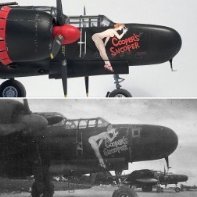



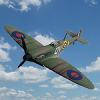
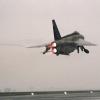

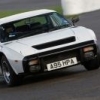

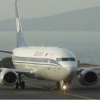


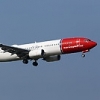

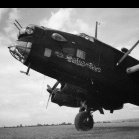

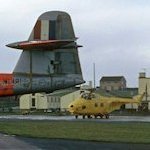
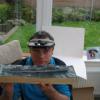




.thumb.jpg.b4a5069fd2c2dd5708ce1694345c5b11.jpg)

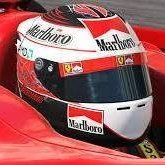




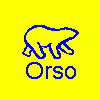
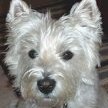

.thumb.jpg.0bac681e0da8e4ed7557610e98fda908.jpg)
